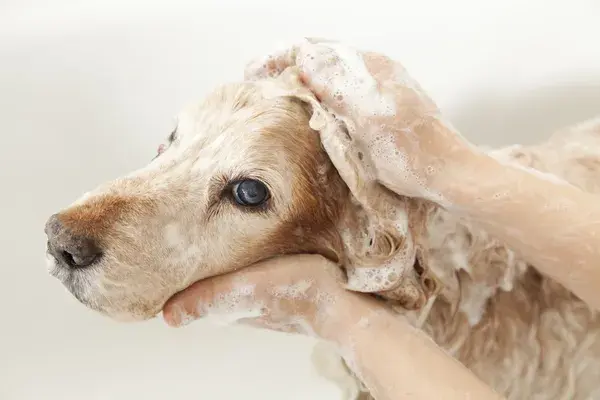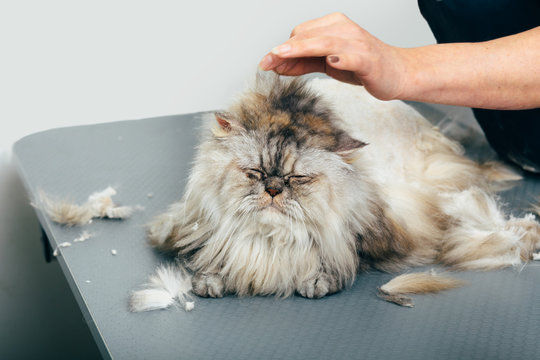Grooming for Senior Pets: Tips for Aging Companions
- Sheron
- Jun 4, 2024
- 5 min read
As pets age, their grooming needs evolve, requiring a more delicate and attentive approach. Senior pets often experience physical changes that affect their skin, coat, nails, and overall grooming tolerance. To ensure that your aging companion stays comfortable and healthy, it's essential to adapt your grooming routine to meet their specific needs. Here are some helpful tips for grooming senior pets and making the experience enjoyable for them.

1. Understand the Physical Changes
Senior pets may experience a range of physical changes, including arthritis, reduced mobility, thinner skin, and graying fur. These changes can affect their tolerance for grooming and their ability to maintain their own hygiene. Understanding these changes helps you tailor your grooming approach to keep your pet comfortable and stress-free.
2. Prioritize Comfort and Safety
When grooming senior pets, comfort and safety should be the primary focus. Use soft-bristled brushes and grooming tools to minimize discomfort, and avoid pulling on mats or tangles that could hurt sensitive skin. If your pet has arthritis, be gentle when manipulating their limbs, and consider using ramps or other aids to make grooming stations more accessible.
3. Adapt to Their Pace
Senior pets might require more time and patience during grooming sessions. It's crucial to go at their pace, allowing them to rest if needed and stopping if they show signs of discomfort. Keep grooming sessions shorter and more frequent, rather than long and intensive, to reduce stress.
4. Pay Attention to Skin and Coat Health
As pets age, their skin can become thinner and more prone to dryness or irritation. Regular brushing helps distribute natural oils throughout their coat, keeping it healthy and shiny. Look for signs of skin issues such as redness, flakiness, or unusual bumps, and consult your veterinarian if you notice anything concerning.
5. Monitor Dental Health
Dental health is a critical aspect of grooming for senior pets. Older pets may have weakened teeth or gum disease, making brushing more challenging. Use soft-bristled toothbrushes and pet-friendly toothpaste, and consider dental wipes if brushing is too difficult. Regular veterinary check-ups are essential to address dental issues before they become severe.
6. Trim Nails with Care
Nail trimming can be especially challenging for senior pets, as they may have thicker or more brittle nails. Use sharp, high-quality nail clippers designed for pets, and trim just a little at a time to avoid hitting the quick. If your pet is uncomfortable with nail trimming, consider using a nail grinder for a more gradual approach.
7. Be Mindful of Temperature
Senior pets can be more sensitive to temperature changes, so it's essential to keep grooming areas warm and draft-free. When bathing, use lukewarm water to avoid shocking their system, and dry them thoroughly to prevent chills. If using a hairdryer, choose a low heat setting and keep it at a safe distance.
8. Create a Calm Environment
Grooming can be stressful for senior pets, so creating a calm environment is key. Use soothing music, calming scents, or gentle massage to help relax your pet during grooming. Consistent grooming routines also help your pet know what to expect, reducing anxiety.
9. Seek Professional Help if Needed
If grooming your senior pet becomes too challenging, don't hesitate to seek professional help. Professional groomers experienced in handling senior pets can provide specialized care and ensure that your pet is groomed safely and comfortably.
10. Show Extra Love and Attention
Lastly, remember that grooming is an opportunity to bond with your senior pet. Show extra love and attention during grooming sessions, offering treats and praise to make the experience positive. A little extra care and affection can go a long way in keeping your aging companion happy and healthy.

11. Address Mobility Issues
Senior pets often face mobility challenges due to arthritis, hip dysplasia, or other joint-related conditions. When grooming these pets, consider their limitations and provide support where needed. For instance, you might need to groom them on the floor rather than on a raised grooming table to avoid unnecessary strain. Using supportive harnesses or slings can help lift pets with mobility issues without causing discomfort.
12. Adapt Grooming Tools for Senior Pets
As pets age, their fur can become thinner or more prone to matting, requiring specialized grooming tools. For long-haired senior pets, consider using detangling sprays or soft grooming gloves instead of traditional brushes. These alternatives can reduce the risk of pulling and damaging the coat. Similarly, if your senior pet has sensitive teeth, choose dental chews designed for older pets, which are softer and easier to chew.
13. Monitor Weight and Nutrition
Grooming sessions are an opportunity to check your pet's body condition and identify potential weight changes. Senior pets may gain or lose weight due to various factors, including decreased activity levels or health conditions. By keeping an eye on their body condition during grooming, you can detect these changes early and adjust their diet or exercise accordingly. Consulting with a veterinarian is crucial if you notice significant changes in weight or muscle tone.
14. Consider the Emotional State of Senior Pets
Older pets might experience cognitive decline, leading to confusion or anxiety. Grooming can be overwhelming for them, especially if they forget familiar routines. To ease this anxiety, establish a consistent grooming schedule and use calming techniques such as gentle touch and soothing voices. If your pet has a favorite blanket or toy, bring it along during grooming sessions to create a sense of familiarity and comfort.
15. Check Ears and Eyes for Health Concerns
Senior pets can be prone to ear infections and eye issues, which can go unnoticed if not checked regularly. During grooming, carefully examine your pet's ears for signs of redness, swelling, or unusual discharge. Similarly, check their eyes for cloudiness, excessive tearing, or discharge. If you notice anything concerning, consult with a veterinarian for proper diagnosis and treatment.
16. Keep Hydration in Mind
Older pets might not drink as much water as they should, leading to dehydration. During grooming, ensure your pet has access to fresh water and encourage them to drink. If you're bathing your pet, be mindful of not using excessively hot water, as it can contribute to dehydration. Providing a pet water fountain or adding water to their food can help increase their fluid intake.
17. Stay Alert for Signs of Pain
Senior pets might not always vocalize their pain, so it's essential to watch for subtle signs during grooming. If your pet flinches, pulls away, or shows aggression when you touch a specific area, it could indicate pain or discomfort. Adjust your grooming approach accordingly, and consider using gentle massage techniques to soothe aching joints. Always consult a veterinarian if you suspect your pet is in pain.
18. Create a Relaxing Post-Grooming Routine
After grooming, give your senior pet time to relax and unwind. A gentle massage or a quiet moment of cuddling can help them calm down after the grooming session. Providing a soft, comfortable resting area allows them to recuperate and feel secure. This post-grooming routine reinforces a positive association with grooming, making future sessions more manageable.
With these comprehensive tips, grooming for senior pets can be a positive experience that supports their health and well-being. By addressing their unique needs and creating a comfortable environment, you can ensure that your aging companions receive the care they deserve while strengthening your bond with them.

Comments